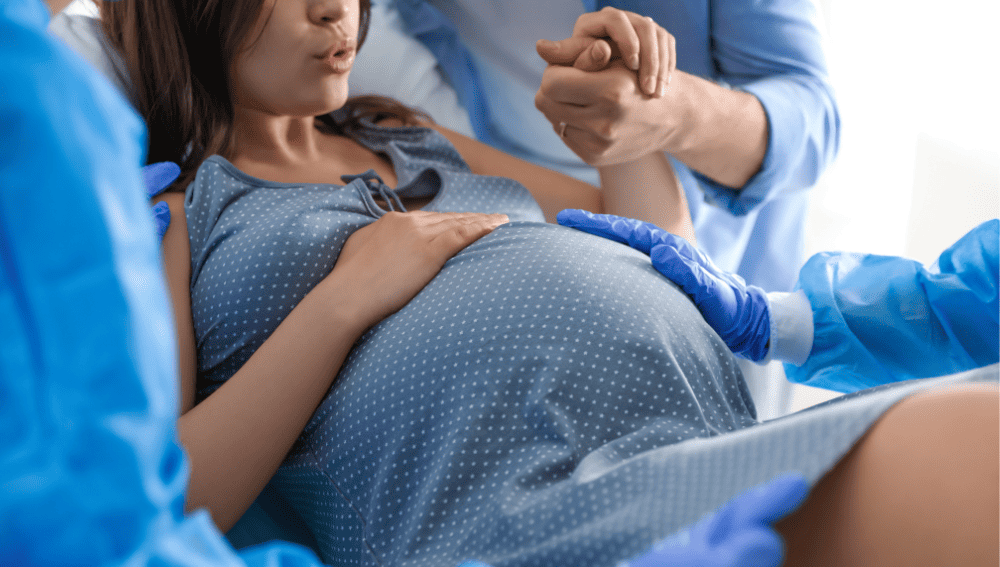Birth injuries are a common concern for parents and healthcare providers. These injuries can range from minor bruises and scratches to more severe and life-threatening conditions.
Understanding the different types of birth injuries and their causes is essential for parents and healthcare providers to prevent and manage these injuries effectively.
There are various causes of birth injuries, including medical negligence, difficult labor or delivery, and pre-existing medical conditions. Some birth injuries may also be caused by the use of forceps or vacuum extraction during delivery.
Identifying the cause of a birth injury is critical to determining the appropriate treatment and legal action, if necessary.
In this article, we will discuss the ten most common types of birth injuries, their causes, and how they can be prevented and treated.
We will also explore the legal aspects of birth injuries and their impact on families and society. By the end of this article, readers will have a better understanding of birth injuries and how to manage them effectively.
Key Takeaways
- Birth injuries can range from minor to severe and can be caused by various factors, including medical negligence and difficult labor or delivery.
- Understanding the causes of birth injuries is essential for determining the appropriate treatment and legal action, if necessary.
- This article will discuss the ten most common types of birth injuries, their causes, prevention, treatment, and legal aspects, providing readers with a comprehensive understanding of birth injuries.
Understanding Birth Injuries
Birth injuries are physical injuries that occur during childbirth. These injuries can range from minor bruises and cuts to more serious injuries that can affect the baby’s health and wellbeing.
While some birth injuries are unavoidable, many can be prevented with proper medical care and attention during childbirth.
Newborns are particularly vulnerable to birth injuries due to their size and delicate nature. Even minor physical injury can have serious consequences for a baby’s health and development.
Some of the most common birth injuries include:
- Brachial plexus birth injury: This type of injury occurs when the nerves that control the arm and hand are damaged during childbirth. It can result in weakness or paralysis of the affected arm.
- Cerebral palsy: This is a group of disorders that affect movement and coordination. It is caused by damage to the brain before, during, or shortly after birth.
- Erb’s palsy: This is a type of brachial plexus injury that affects the upper arm. It can result in weakness or paralysis of the affected arm.
- Facial nerve injury: This type of injury can occur when the baby’s face is compressed during delivery. It can lead to weakness or paralysis of the facial muscles.
- Fractures: Fractures can occur during childbirth due to the pressure and force involved. These injuries are usually minor and heal on their own, but more serious fractures may require medical attention.
- Head injuries: Head injuries can occur during childbirth due to the pressure and force involved. These injuries can range from minor bumps and bruises to more serious brain damage.
- Hemorrhage: Hemorrhage is a serious complication that can occur during childbirth. It is caused by excessive bleeding and can lead to serious health problems for the mother and baby.
- Hypoxia: This is a lack of oxygen to the brain. It can occur during childbirth and can lead to serious brain damage or even death.
- Shoulder dystocia: This occurs when the baby’s shoulder gets stuck during delivery. It can result in injury to the baby’s nerves or bones.
- Spinal cord injuries: Spinal cord injuries can occur during childbirth due to the pressure and force involved. These injuries can range from minor to severe and can have long-term effects on the baby’s health and wellbeing.
It is important for parents to understand the risks associated with childbirth and to be aware of the most common birth injuries. By working closely with their healthcare provider, parents can take steps to reduce the risk of injury and ensure the health and wellbeing of their baby.
Causes of Birth Injuries
Birth injuries can occur due to a variety of factors. Some of the most common causes of birth injuries include difficult labor, dystocia, shoulder dystocia, maternal obesity, and gestational diabetes.
Difficult labor can occur when the baby is too large or the mother’s pelvis is too small. This can lead to prolonged labor, which can increase the risk of birth injuries.
Dystocia is a condition where the baby’s position or presentation makes it difficult for them to pass through the birth canal. This can also increase the risk of birth injuries.
Shoulder dystocia is a medical emergency that occurs when the baby’s shoulder gets stuck behind the mother’s pubic bone during delivery. This can result in nerve damage or fractures to the baby’s collarbone.
Maternal obesity and gestational diabetes can also increase the risk of birth injuries. Babies born to mothers with these conditions are more likely to be large, which can make delivery more difficult.
Forceps delivery and vacuum extraction are also common causes of birth injuries. These procedures are used to assist with delivery when the baby is not progressing through the birth canal.
However, they can increase the risk of birth injuries, including forceps marks and skull fractures.
Breech delivery, where the baby is positioned feet or buttocks first, can also increase the risk of birth injuries. Cesarean delivery is often recommended for breech babies to reduce the risk of injury.
Overall, there are many factors that can contribute to the development of birth injuries. It is important for healthcare providers to carefully monitor and manage labor and delivery to reduce the risk of injury to both the mother and baby.
Types of Birth Injuries
Birth injuries can occur during the labor and delivery process, leading to temporary or permanent damage to the baby. Some of the most common types of birth injuries include nerve damage, bone fractures, bleeding, and oxygen deprivation.
Nerve injuries can occur when the baby’s shoulder becomes stuck during delivery, leading to damage to the brachial plexus nerves. This can result in conditions such as Erb’s palsy or Klumpke’s palsy, which can cause weakness or paralysis in the affected arm.
Bone fractures, particularly of the clavicle, can occur during difficult deliveries. These injuries can be painful for the baby but usually heal without complications.
Bleeding can occur in the scalp, leading to conditions such as caput succedaneum or cephalohematoma. These conditions usually resolve on their own, but in severe cases, they may require medical intervention.
Oxygen deprivation during delivery can lead to conditions such as hypoxic ischemic encephalopathy (HIE), which can cause brain damage and long-term disabilities. Infections, blood clotting disorders, and other medical complications can also contribute to birth injuries.
Treatment for birth injuries may include physical therapy, occupational therapy, and other interventions to help the baby recover and develop normally. In some cases, surgery may be necessary to correct bone fractures or nerve damage.
Overall, it is important for healthcare providers to closely monitor labor and delivery to prevent birth injuries and provide prompt treatment when they do occur.
Risk Factors and Prevention
Birth injuries can happen to any baby, but certain factors can increase the risk of these injuries. Knowing the risk factors and taking steps to prevent them can help reduce the likelihood of birth injuries.
Gestational Age and Prematurity
Babies born prematurely, before 37 weeks of gestation, are at a higher risk of birth injuries. This is because their organs and body systems are not fully developed, making them more vulnerable to complications during birth.
Mothers who are at risk of premature labor should receive appropriate medical care to prevent premature birth.
Large Babies
Babies who are larger than average, weighing over 8 pounds 13 ounces (or 4,000 grams), are at a higher risk of birth injuries. This is because they may have difficulty passing through the birth canal, leading to complications during delivery.
Mothers with gestational diabetes or who are obese may have larger babies, so they should receive appropriate medical care to prevent birth injuries.
Gestational Diabetes and Maternal Obesity
Mothers with gestational diabetes or who are obese are at a higher risk of having babies with birth injuries. These conditions can cause the baby to be larger than average, leading to complications during delivery.
Mothers with these conditions should receive appropriate medical care to manage their condition and reduce the risk of birth injuries.
Forceps Marks and Breech Delivery
Babies who are delivered using forceps or who are in the breech position (feet first) are at a higher risk of birth injuries. Forceps can cause marks or bruises on the baby’s head, while breech delivery can cause complications during delivery.
Medical professionals should take appropriate precautions during these deliveries to reduce the risk of birth injuries.
Cesarean Delivery
While cesarean delivery is generally considered safer than vaginal delivery, it still carries a risk of birth injuries. Babies delivered by cesarean section may have breathing difficulties or be injured during the surgery.
Medical professionals should take appropriate precautions during cesarean delivery to reduce the risk of birth injuries.
Forceps Delivery
Babies delivered using forceps are at a higher risk of birth injuries, such as bruises, cuts, or even skull fractures. Medical professionals should take appropriate precautions during forceps delivery to reduce the risk of birth injuries.
Overall, knowing the risk factors and taking appropriate precautions can help reduce the likelihood of birth injuries. Mothers should receive appropriate medical care during pregnancy and delivery to manage any conditions that may increase the risk of birth injuries.
Medical professionals should also take appropriate precautions during delivery to reduce the risk of birth injuries.
Diagnosis and Treatment
Diagnosis of birth injuries usually involves a physical examination of the newborn, along with a review of the mother’s medical history and the details of the delivery. Diagnostic testing, such as X-rays or MRIs, may also be necessary to identify the extent of the injury.
Once a birth injury has been diagnosed, the treatment plan will depend on the type and severity of the injury. In many cases, the injury will heal on its own with time and monitoring. However, some injuries may require more extensive treatment.
Physical therapy and occupational therapy may be recommended to help the child regain strength, mobility, and function. These therapies may involve exercises, stretches, and other techniques to improve muscle tone, coordination, and range of motion.
In more severe cases, surgery may be necessary to repair the injury. This may involve reconstructive surgery to repair a cleft palate or nerve damage, or orthopedic surgery to correct a bone fracture or dislocation.
Recovery from a birth injury can be a long and challenging process, but with proper diagnosis and treatment, many children are able to make a full recovery and go on to lead healthy and active lives.
Legal Aspects of Birth Injuries
When a baby is born with a birth injury, there may be legal implications for the medical professionals involved in the delivery. Birth injuries can be caused by negligence on the part of the medical staff, and in some cases, legal action may be taken against them.
Negligence can occur during the labor and delivery process, such as failing to monitor the baby’s heart rate or not responding appropriately to signs of fetal distress.
If negligence is found to be the cause of the birth injury, the medical staff may be held liable for damages.
Medical negligence is another possible cause of birth injuries. This occurs when a medical professional fails to provide the appropriate level of care, leading to injury or harm. In cases of medical negligence, the medical staff may be held liable for damages.
Parents who believe their child’s birth injury was caused by negligence or medical negligence may choose to pursue legal action. This can help cover the costs of medical care and other expenses related to the injury.
It’s important to note that not all birth injuries are caused by negligence or medical negligence. Some birth injuries are simply the result of an unpredictable and unavoidable complication during the delivery process.
In conclusion, when a baby is born with a birth injury, there may be legal implications for the medical staff involved in the delivery.
Negligence and medical negligence are possible causes of birth injuries, and legal action may be taken if either is found to be the cause. However, it’s important to remember that not all birth injuries are the result of negligence or medical negligence.
Impact on Families and Society
Birth injuries can be devastating for families and can have a significant impact on society as a whole. The following paragraphs will discuss the impact of birth injuries on families and society.
Impact on Parents
Parents of children with birth injuries often experience a range of emotions, including guilt, anger, and sadness. They may feel guilty for not being able to prevent the injury and may feel angry at healthcare providers for not providing adequate care.
Parents may also experience financial strain due to the cost of medical care and may have to take time off work to care for their child.
Impact on Mothers
Mothers who experience birth injuries may have difficulty bonding with their child and may experience postpartum depression.
They may also have physical complications, such as incontinence or sexual dysfunction. These complications can affect their quality of life and may require additional medical care.
Impact on the United States
Birth injuries can have a significant impact on the healthcare system in the United States. The cost of medical care for children with birth injuries can be high, and the long-term care required can put a strain on the healthcare system.
Additionally, birth injuries can result in disability, which can limit the child’s ability to contribute to society as an adult.
Impact on Regions
The impact of birth injuries can vary by region. In areas with limited access to healthcare, birth injuries may go untreated or may be treated inadequately.
This can result in higher rates of disability and mortality. In areas with better access to healthcare, birth injuries may be diagnosed and treated more quickly, resulting in better outcomes for children and families.
In conclusion, birth injuries can have a significant impact on families and society. It is important for healthcare providers to provide adequate care to prevent birth injuries and to provide appropriate treatment when they occur.
Additionally, it is important for society to support families affected by birth injuries and to work towards improving access to healthcare for all.
Related post: Baby Steps to Financial Security: New Parents and Life Insurance
Frequently Asked Questions
What are some common birth injuries that newborns experience?
Newborns can experience a variety of birth injuries. Some of the most common birth injuries include brachial plexus injuries, facial nerve injuries, skull fractures, and cerebral hemorrhage.
What are the symptoms of birth injuries in babies?
The symptoms of birth injuries in babies can vary depending on the type of injury. Some common symptoms include difficulty breathing, seizures, excessive crying, and poor feeding.
How can birth injuries be prevented?
There are several ways to prevent birth injuries, including proper prenatal care, monitoring the baby’s position during delivery, and using appropriate delivery techniques.
Additionally, healthcare providers should be trained to identify and manage potential complications during delivery.
What is the management of birth injuries in newborns?
The management of birth injuries in newborns typically involves a multidisciplinary approach that includes medical management, physical therapy, and surgical intervention if necessary. Treatment will depend on the type and severity of the injury.
What are some effects of common traumas during birth?
Common traumas during birth can have a range of effects on newborns, including developmental delays, cognitive impairment, and physical disabilities. In some cases, birth injuries can lead to lifelong disabilities.
Can birth injuries lead to cerebral palsy?
Yes, some birth injuries can lead to cerebral palsy, which is a neurological disorder that affects movement and coordination. However, not all cases of cerebral palsy are caused by birth injuries, and there are many other factors that can contribute to the development of this condition.

Iesha is a loving mother of 2 beautiful children. She’s an active parent who enjoys indoor and outdoor adventures with her family. Her mission is to share practical and realistic parenting advice to help the parenting community becoming stronger.



